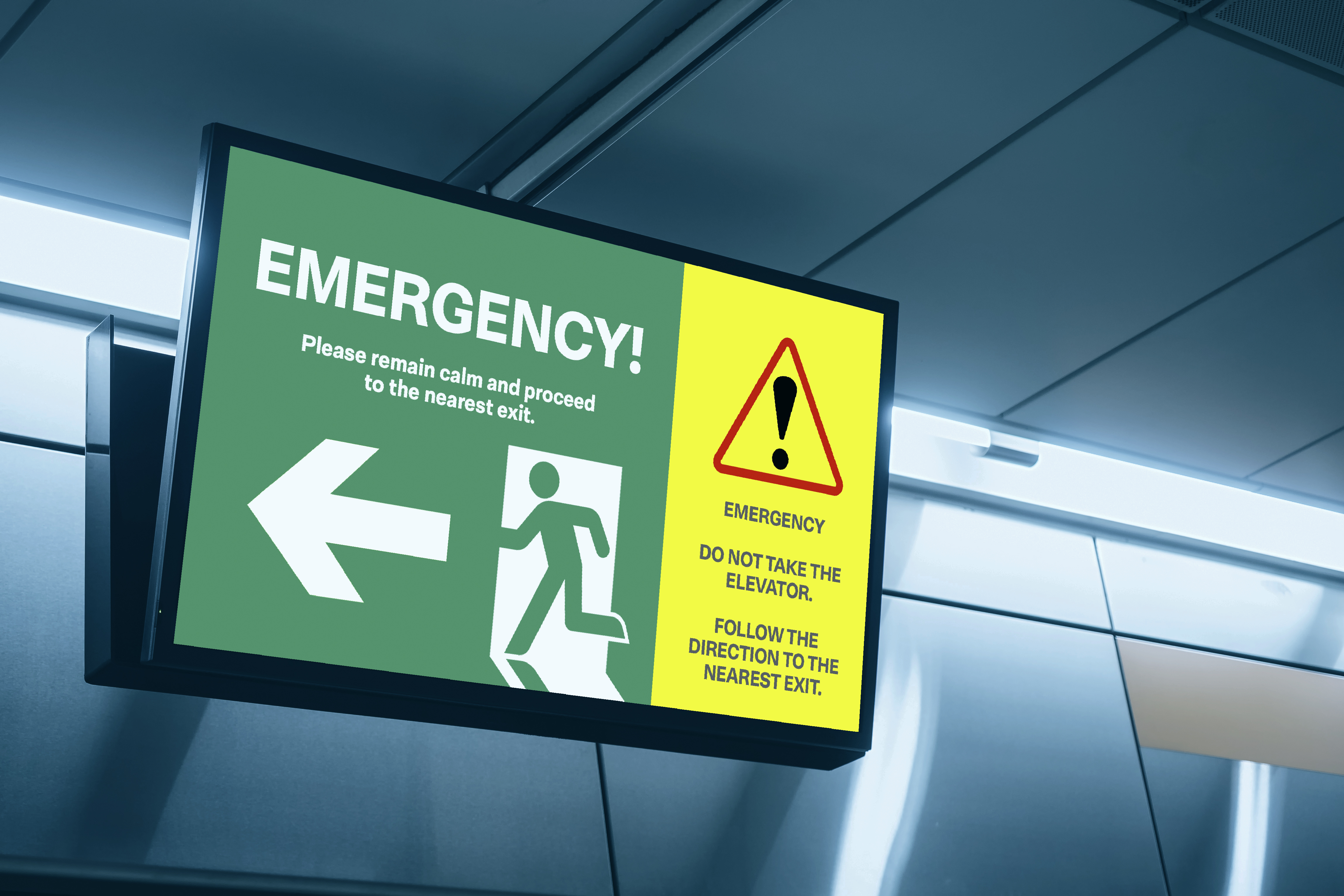The age of standalone digital signage is officially over—or at least it should be. In 2025, digital displays have evolved beyond their humble beginnings as isolated screens in lobbies, corridors, or waiting rooms, sharing a rotation of basic static content. Today, robust digital signage networks with real-time data integration and intelligent content management are commonplace. The power to communicate and engage audiences is at every organization's fingertips. From corporate campuses to hospitals, transportation hubs to universities, the power of connected digital signage is unlocking unparalleled value.
From Isolated Screens to Integrated Networks
In the early days, digital signage was little more than a fancy replacement for posters or bulletin boards. Screens were expensive, software options were limited, and network bandwidth was a huge problem. The result, standalone displays—unable to connect or share content with other devices. Content creation was manual, updates were infrequent, and messaging was inconsistent.
Fast-forward to 2025, hardware prices have plummeted, and software has evolved to be cloud-based, on-premise, or hybrid and is now scalable. Network bandwidth is no longer a limiting factor. Most importantly, organizations now understand the strategic importance of unifying their digital signage into a centralized, networked system that supports automation, personalization, and data-driven decision-making.
The Dark Side of Silos
Standalone digital signage screens create silos. It requires localized management of each screen, which results in redundant work, inconsistent messaging, and wasted resources. More importantly, it undermines an organization's ability to present a unified brand and respond in real-time to evolving events. In a small organization with only a few screens, it may not seem like a significant issue to manage screens individually. However, consider an airport, school, mall, or any other organization with hundreds of screens. Multiply the effort to change and update a single screen by hundreds or even thousands. Imagine needing to share a security alert, weather notice, or any critical real-time information—nearly impossible. Or, ensuring brand consistency across hundreds of screens in varying sizes and configurations - colors, logos, and graphics define a brand without a centralized system; every screen becomes a rogue communicator, diluting your brand and confusing your audience. It's not just inefficient—it's risky.
Single-use screens often lack remote management capabilities, meaning every update or troubleshooting task requires physical access. This is a potentially huge problem that leads to costly maintenance routines and delayed updates. It is for this reason that screens fall into disuse or display outdated, irrelevant information simply because there is no efficient way to manage them. Standalone signage also complicates analytics and measurement. Without centralized data collection, organizations can't assess which content is effective, how viewers are engaging, or whether their communication strategy is meeting objectives. This lack of visibility makes optimization nearly impossible. In 2025, these inefficiencies are simply unacceptable.
It's Time to Take Control
If you are still juggling disconnected screens and piecemeal content updates, it's time to upgrade. A connected digital signage network gives you total command from a single platform. Push branded, on-message templates to every screen in your network—while still allowing local teams to personalize where it counts. That means faster rollouts, consistent branding, and no more last-minute design scrambles.
On campus? Schedule updates, promote events, or trigger safety alerts across lecture halls, dorms, and cafeterias in seconds. In retail? Launch a flash sale in Toronto and watch it hit every store in the region—before your competitors even boot up their laptops.
Screens Powered by Real-Time Intelligence
In 2025, digital displays aren't just showing content—they're reacting to it, thanks to the Internet of Things (IoT). Whether it's smart sensors detecting a crowd forming at a mall entrance and automatically updating nearby screens to redirect traffic, transit displays pulling live GPS data to inform commuters of delays or alternate routes, or wayfinding signs in office buildings adjusting based on room bookings—no manual input is needed.
Need proof it works? Look no further than parking lots, where IoT-enabled screens direct drivers to available parking spaces in real time, easing traffic congestion and saving time.
Screens That Speak Up in a Crisis
When emergencies strike, communication can't wait. That's why connected digital signage is becoming a critical part of safety infrastructure. Whether it's a weather event, a lockdown, or a fire alarm, every second counts. When integrated with emergency alert systems, your screens can instantly change from regularly scheduled content to urgent instructions—showing evacuation routes, safety protocols, and real-time updates. In fact, many public spaces are now required by law to include digital signage in their emergency plans.

Personalized Content Supercharged by Data
Want your content to connect with your audience? Make it personal. With access to real-time data, connected screens can deliver messages tailored to who's watching, where they are, and what they need. Show KPIs and HR reminders in specific departments. Update wait times and wellness tips in clinic lobbies. Highlight student clubs or first-year tips on campus. The result? More relevance, more engagement, and a stronger connection with your audience.
Deploy Your Way: Cloud, On-Prem, or Hybrid
Every organization's tech landscape is different. At Omnivex, we give you the flexibility to deploy digital signage your way—without compromise.
Go cloud for scalability, speed, and remote access. Stay on-premise if you're bound by strict data security rules. Or choose a hybrid setup for the best of both worlds. Whatever your infrastructure, industry, or IT policy—your digital signage network adapts to you.
Built for the Connected Era
At Omnivex, we're not just about displaying content—we're about driving smarter communication. Our platform is designed for modern organizations that need speed, flexibility, and impact. Whether you're running a hospital, airport, campus, or enterprise, we help you:
- Unify every screen under one control hub
- Deliver content in real-time based on triggers or business rules
- Present data in beautiful, meaningful ways
- Automate updates using sensors, schedules, or live inputs
- Choose from cloud, on-prem, or hybrid models
It's everything you need to keep your communications dynamic, responsive, and future-ready.
Looking Ahead
AI, machine learning, and AR are already shaping the next wave of digital signage—displays that adapt to viewer sentiment, use voice or gesture controls, and deliver immersive experiences. But none of that works without a connected foundation.
Disconnected screens? They're dead weight. If your signage is still stuck in the past—manually updated, inconsistent, or isolated—it's time for a serious rethink. The tools are here. Don't let your screens hold you back.
